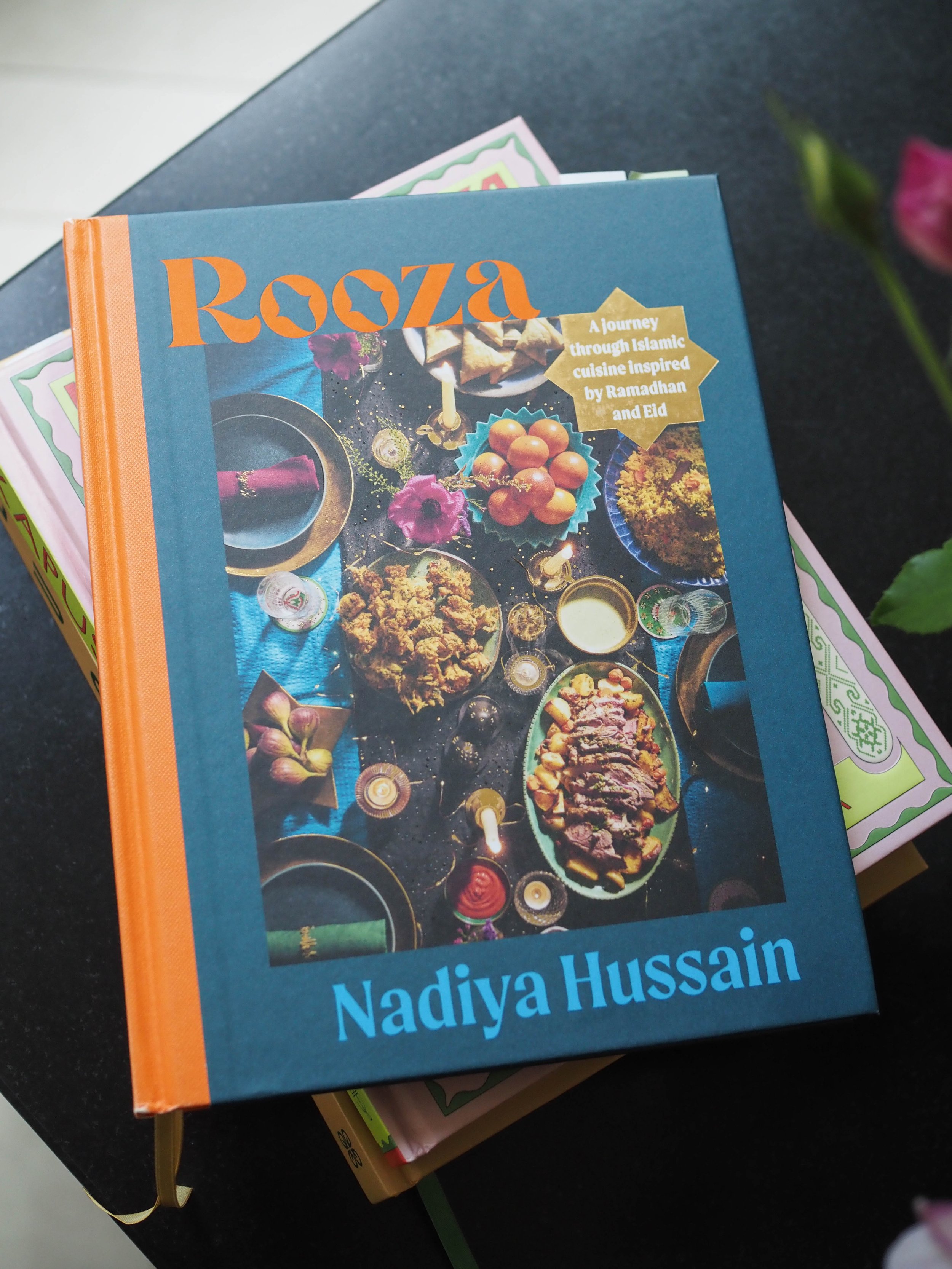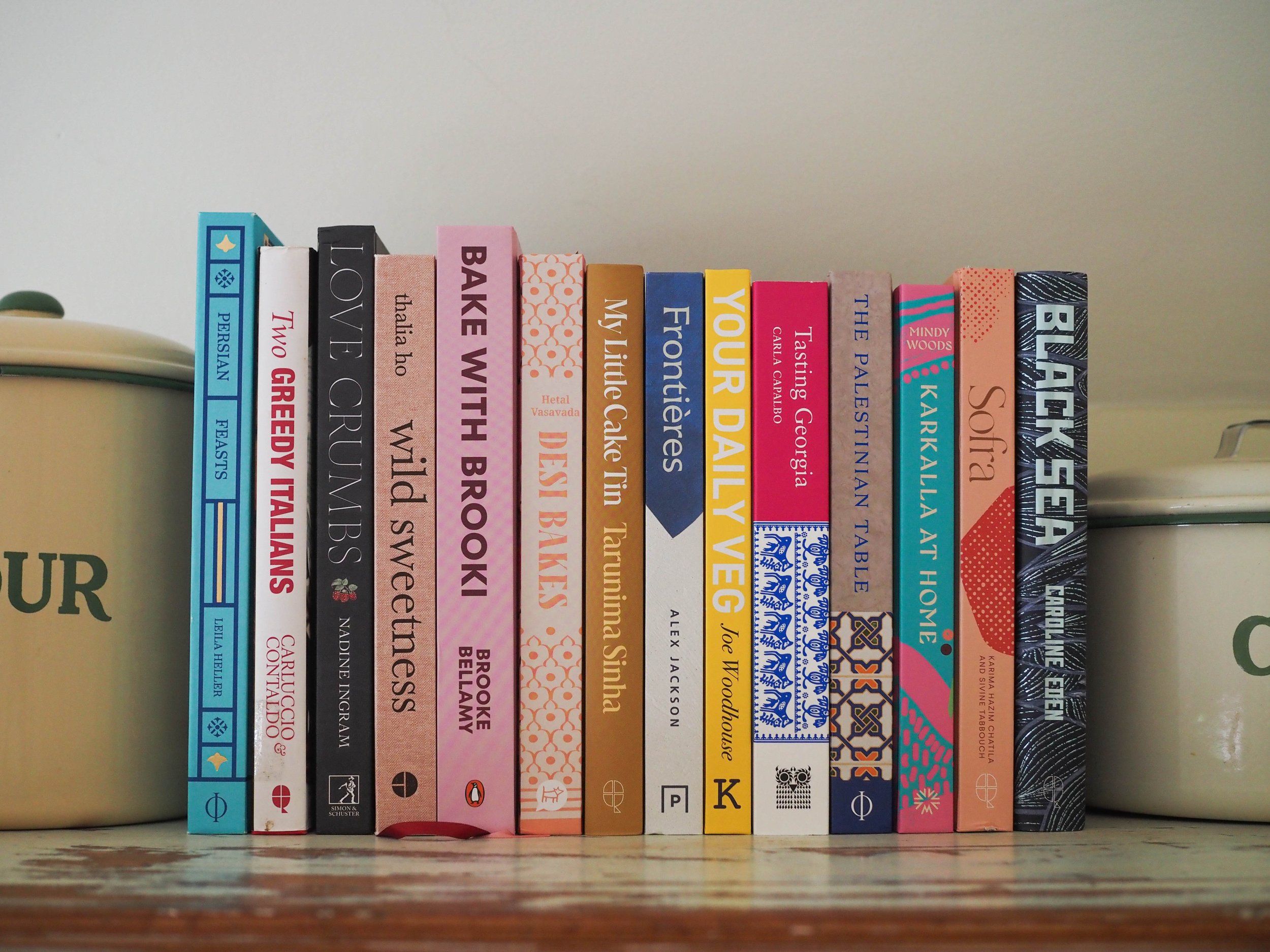It’s finally time to check back in with my cookbooks worth waiting for list for the first half of 2025. Were the cookbooks waiting for? In short, yes! I am enjoying all four of these new cookbooks, have a read below for more on each one.
The next cookbooks worth waiting for list will be out soon, sign up to my newsletter to be the first to know about all the cookbooks reviews!
Sour Cherries and Sunflowers by Anastasia Zolotarev (Quadrille)* - To say this book is an absolute joy is an understatement. Sour Cherries and Sunflowers is generous and inviting, with Anastasia bringing us into her families Ukrainian and Belarusian heritage through treasured recipes and family favourites. Sour Cherries and Sunflowers has a variety of recipes from things to enjoy in the morning, preserves, recipes to share and celebrate. This book may on the face of it seem similar to Kapusta below, however the two, whilst sharing some similarities, are quite different in terms of focus, design, photography and feel.
I was fortunate to attend a cooking class with Anastasia last weekend, which focused on making varenyky, Ukrainian dumplings. We made the kefir based dough found on page 95 of Anastasia’s cookbook, and a dairy free alternative, with three different fillings. The varenyky were delicious, especially served with slow cooked onions and sour cream. We also tried rye bread topped with beetroot prune and walnut salad (p.158), plus Tvorog Stuffed Aubergine Rolls (p.162), the Apple Pear and Blackcurrant variation of the crumble on page 190, a Chocolate Buckwheat Cake with Sour Cherry Sauce (p.192), Sauerkraut with Apple (p.64-5) and the sour cherry variation of the redcurrant kompot (similar to a homemade cordial) on page 91. Everything was delicious and I want to make almost everything again! I have also made Babushka Liana’s Aubergine Ikra (p.160), which is like a dip with Aubergine, capsicum and tomato, which I will definitely be making again.
The recipes in this book are clearly a stand out (and if you can get to any of Anastasia’s book events you can try some for yourself as I did!), and there are even more I want to try. Aside from the recipes, the cover illustration is beautiful and the photography and styling is absolutely gorgeous. The use of light really stands out to me in the images, and there is such a calm inviting feel to the images and the book itself.
*Thanks to Anastasia and Hardie Grant for gifting me a copy of this book.
Kapusta by Alissa Timoshkina (Quadrille) - Kapusta, the first of a small handful of Eastern European focused cookbook releases this year, is a triumph of vegetable forward recipes highlighting the most commonly used vegetables in Eastern Europe - cabbage (or Kapusta as it is known in the various Slavic languages across the region), beetroot, potato, carrot and mushrooms. The chapters of the book are divided by these vegetables, plus a chapter for dumplings and ferments, two staples of much Eastern European cuisine. Through Kapusta, Alissa is aiming to show what variety and flavour vegetable forward Eastern European recipes have, moving away from the boring cabbage trope many in Western countries have associated with Eastern European cuisine. I really think Alissa has achieved this, by presenting the recipes in a vibrant and interesting way, highlighting the differences and similarities of the various food cultures that make up Eastern European cuisine. If you were wanting to add more vegetable to your cooking repertoire, this is certainly a great book to help you with that. I also think between Kapusta and Sour Cherries and Sunflowers above, those of us who don’t eat much cabbage and don’t really know what to do with it, will have a whole new lease on our vegetable cooking and eating lives!
Beyond the interesting and accessible nature of the recipes, the research that has gone into them is clear when reading the headers for each recipe. Alissa has made an effort to highlight recipes from lesser known and minority cultures within Eastern Europe, such as the Volga Tatars and the Udmurts. There are also a number of recipes of Ashkenazi Jewish origin, which together with the recipes from other minority groups and those recipes we may be more familiar with, creates an understanding of the diversity that exists, and has existed forever in Eastern Europe, despite the image of and forced nature of the uniformity of the region especially under Soviet rule.
The illustrations in Kapusta are really wonderful, and along with the design and colour scheme of the book create a bright vibrant, yet soft and calm feel to the book. The photography and styling in Kapusta also contributes to this feel, the use of shadow in some of the images reminds me that many of the vegetables Kapusta showcases are found predominantly in the cooler months, but that food and ingredients such as these can always bring light and colour to our kitchens and tables. In terms of recipes I have made the Beetroot and Egg Garlicky Mayo Spread (p.60) twice now, it was delicious on fresh bread and bread rolls for lunch. I also would love to try the Polish Potato and Gherkin Salad (p.84), the Tatar Manti with Carrots and Pumpkin (p.120) and the Knishes - Ashkenazi Buns with Caramelised Carrots and Chicken (p.138).
For more on Kapusta check out this interview with Alissa by Anna Kharzeeva on Instagram.
Lugma by Noor Murad (Quadrille) - Noor, who has previously co-authored books with Yotam Ottolenghi, brings us a generous and flavourful look at food from her Middle East. Noor grew up in Bahrain, though her Mother is English so she has quite a varied influence when it comes to food. Noor acknowledges in Lugma that her version of Middle Eastern food is highly influenced by going up in the Gulf, as opposed to the food of the Levant which many outside the Middle East are more familiar with. As I expected, the recipes in Lugma appear to be really flavourful, full of spices in particular. Many of the recipes, which mostly focus on the savoury though there are a few sweet as well, seem hearty, many needing a bit of time to stop and prepare. The kinds of things a little time taken to make will reward you with a delicious flavourful meal, and hopefully some leftovers too.
Noor’s writing throughout Lugma is really engaging, and through that plus the recipes and photos, the reader gets to view Bahrain, a part of the Middle East not often covered in Western cookbooks, through Noor’s eyes and kitchen. The food photography in this book is clear and bright, with the location photography really highlighting the food and natural environment of Bahrain. As you might expect from someone who worked in the Ottolenghi Test Kitchen, you’ll need a few spices and ingredients you might not already have to make some of these recipes - though I think your pantry and your table will be richer and tastier for it. Top of my list to try are the Chicken Koftas with Fresh Tomato Sauce (p.209) and Muhammad oo Samak: Date Molasses Rice with Fish (p.139).
Rooza by Nadiya Hussain (SourceBooks) - Nadiya has published many cookbooks, but Rooza feels extra special. Rooza is an exploration of Islamic recipes inspired by Ramadhan and Eid, something that is very close to Nadiya’s heart and something she hasn’t been able to explore much via her cookbooks until now. Rooza has a rich, vibrant and generous feel to it, with slightly moody photography that utilises the contrast between shadow and light. The recipes stem from countries who have Muslim populations who observe Ramadhan including Bangladesh, Afghanistan, Syria, Somalia and Pakistan. The recipes which could be served as a dinner to break the fast, are complete meals in that they contain the sides to serve as well as the main element to the meal. So you don’t have to go searching for what to serve with it, Nadiya has made it really simple. There are also many sweet options throughout the book as well, which you could pair with the dinner options to serve as dessert.
Outside of observing Ramadhan and celebrating Eid-ul-Fitr, these recipes would be wonderful for any celebration, weekend meal, or even just a super tasty weeknight meal. The only thing I don’t like about this book is that I somehow managed to buy an American version, so all the recipes are in cups and Imperial measures! I’m hoping to find a UK published copy at some point to replace the one I have, but aside from that I am really enjoying this book from Nadiya.
To hear Nadiya talk more about Rooza check out this video on Instagram.















